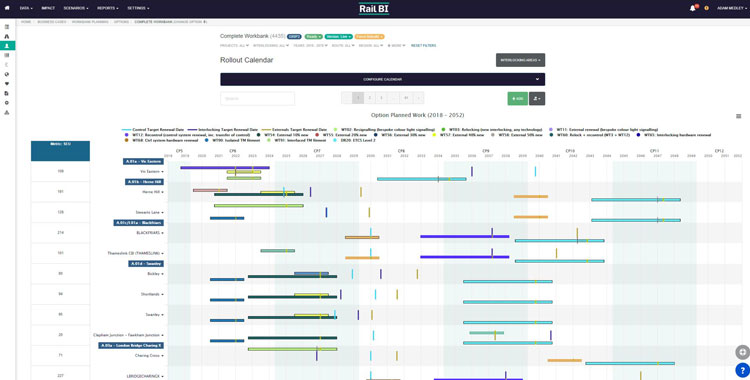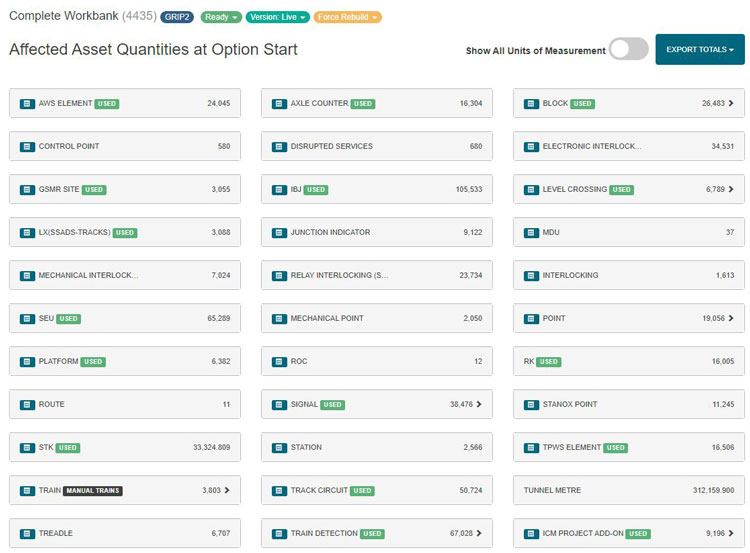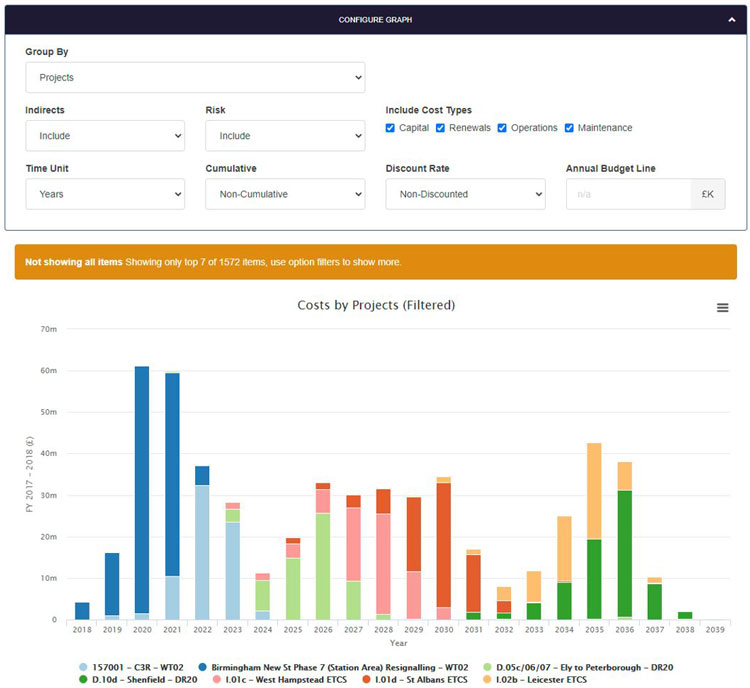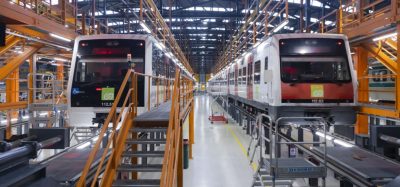Using workbank planning to improve renewal and maintenance of assets
Posted: 23 November 2022 | Rail BI | No comments yet
Workbank planning is a beneficial core activity for all asset management teams. Read on to find out what the benefits are of using modern software tools when introducing workbank planning.


What is workbank planning?
A workbank is a set of planned works, whether renewals, maintenance or enhancements, usually for a single asset type, domain or discipline. Planning is essential: budgets must be forecasted and requested, resources must be allocated, deliverability assessed. Whether looking at the short-, medium- or long-term, workbank planning is a core activity for all asset management teams. A coherent plan ensures assets are renewed and maintained in a timely fashion in order to meet safety, reliability and performance targets.
Using modern software tools
Software tools can form the backbone for the whole planning activity, saving a great deal of time and money in the process. Portfolio management becomes far more achievable as different asset types can be assessed on a common platform. Clashes and opportunities for efficiencies can then be identified. Planning at different timescales can merge seamlessly into each other, where changes in the short-term plan can impact the higher-level medium-term plan and so on. Trends can be spotted as more data is collected, historical data can be further analysed to assess risk and asset lifetime based on specific geography and context.


Harnessing insights from data
There is a huge amount of asset data out there, and more being gathered daily. The old maintenance and renewal paradigms are being replaced as more insights become available for more efficient asset lifecycle management. Software tools are essential in this process as there is simply too much information for people to process.
After the insights are gathered, this should be combined with any existing knowledge of asset lifetimes and maintenance and renewal policies to produce an automated baseline plan. The interaction between this plan and the human-led manual planning using specific local knowledge and awareness of larger factors is essential. Planners cannot be replaced but require instead a baseline to start their work on, when they make changes to the plan, the impact of that change should be readily apparent, not just to costs but risk and asset life.
New developments in conditioning monitoring, advanced analytics and predictive maintenance should seamlessly integrate into these planning tools. Planners should have access to these insights but not require them, as they will ideally be simply a new input to the automated planning.


Developing tools
Commercial ‘off-the-shelf’ systems rarely fit the bill for the specific needs and processes of individual rail networks, not to mention asset disciplines. Yet it should not be difficult to harness existing systems and develop them for new uses. When developing tools, stakeholder engagement is essential, not only for honing in on the bespoke user needs but achieving a level of ownership and commitment that allows a smooth rollout and onboarding process.
Data quality is often a concern, yet this will never be improved until the data is in use. Using and harnessing data allows discrepancies and holes to be highlighted and ideally fixed. Waiting for data to be ‘good enough’ essentially means waiting indefinitely. As the human element in workbank planning is not removed, the automated plan does not need to be precisely unimpeachable, at least at first. It is better to have a baseline that is approximately right, than precisely wrong or not there at all.


Immediate benefits of software tools in workbank planning
There are several benefits of software tools when introducing workbank planning, including:
- Consistency: All planning will use the same information and platform, a defect resolved in one area will propagate to improve all areas.
- Coherence: A single platform allows centrally-led policies, portfolio management, and consistency across different time horizons.
- Reliability: The ubiquity and risk of errors in complex spreadsheets is well-documented. Versioning, distribution and access control can be easily managed.
- Flexibility: Software can and should embrace change and evolve with changes in user needs and opportunities from new technologies and processes.
- Future-proof: Evolutions in predictive maintenance should easily and seamlessly integrate as a new input to automated planning processes.
Workbank planning in Rail BI
- Rail BI harnesses asset information to inform asset life policies and target dates for renewal for components or systems.
- Intervention types are user-defined, allowing for very flexible planning. Interventions types can:
- Impact component or subsystem technologies
- Affect the remaining life for assets
- Provide default cost and delivery profiles.
- Targeted interventions can be used to provide life extension, to allow an asset to safely be used for longer before replacement
- Automated workbanks are calculated based on asset data, policies and settings
- Users can define complex interaction rules, to ensure the correct intervention type is planned based on asset data, the historical workbank, and interactions with other works
- Manual interventions and changes bring in new or different automated interventions, such as where renewal needs have been changed due to an upgrade. As the user iterates and improves the plan, the system will always inform the user of any potential issues. It can also suggest interventions, for example where a targeted life extension may allow the asset to last until an upgrade.
- The resulting work bank adheres to policies, shows where the user has manually decided to go outside policy, and combines with Rail BI detailed costs and benefits for easy forecasting and quick, confident decision-making.
Rail BI is committed to reusing knowledge from previous projects, and advocates for a simple approach: setup once, test twice, reuse forever. To find out more about how Rail BI can help your organisation while working with your existing systems, get in touch with the team here.
Stay Connected with Global Railway Review — Subscribe for Free!
Get exclusive access to the latest rail industry insights from Global Railway Review — all tailored to your interests.
✅ Expert-Led Webinars – Gain insights from global industry leaders
✅ Weekly News & Reports – Rail project updates, thought leadership, and exclusive interviews
✅ Partner Innovations – Discover cutting-edge rail technologies
✅ Print/Digital Magazine – Enjoy two in-depth issues per year, packed with expert content
Choose the updates that matter most to you. Sign up now to stay informed, inspired, and connected — all for free!
Thank you for being part of our community. Let’s keep shaping the future of rail together!







